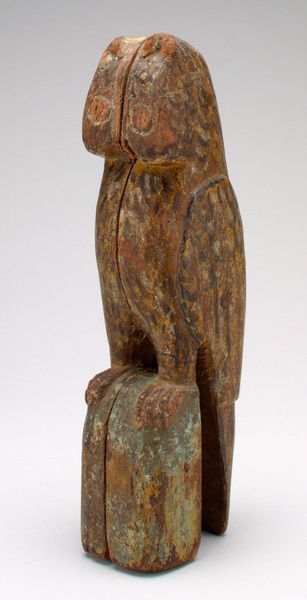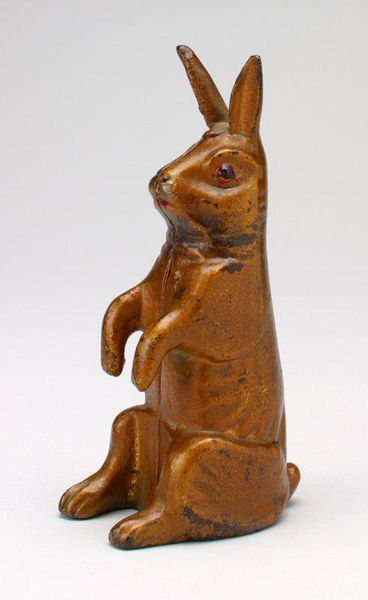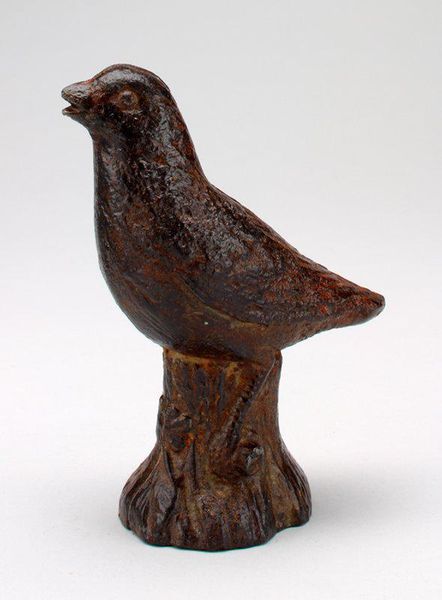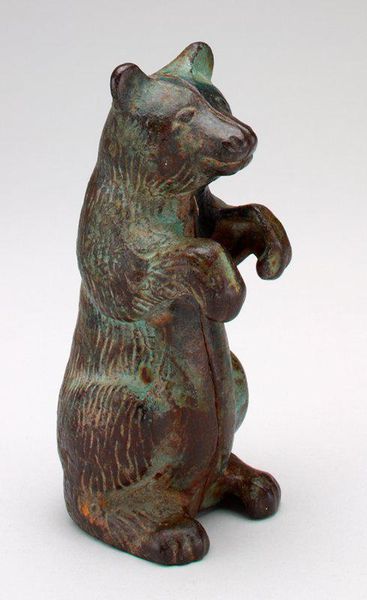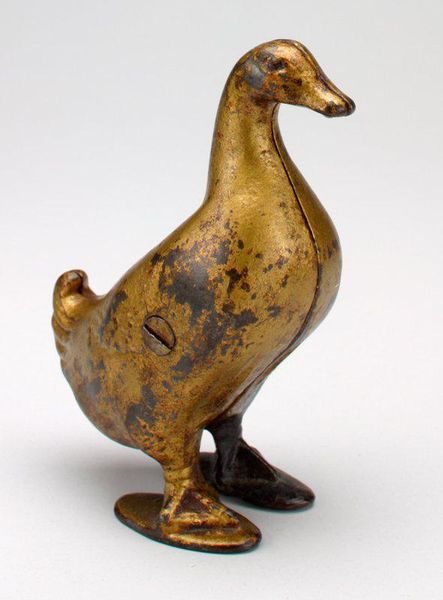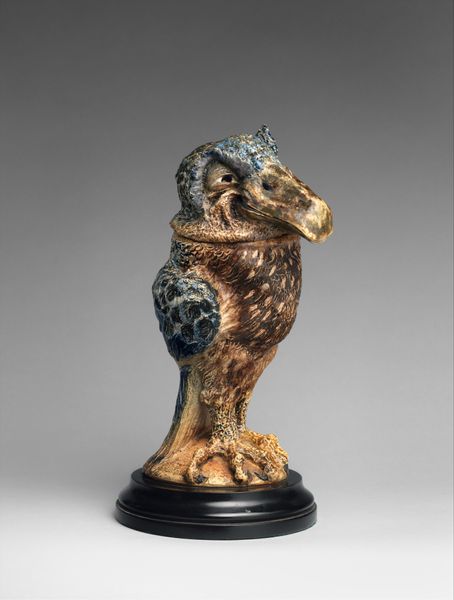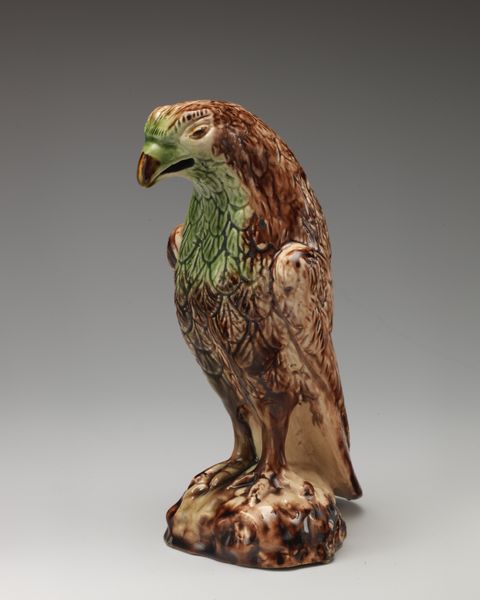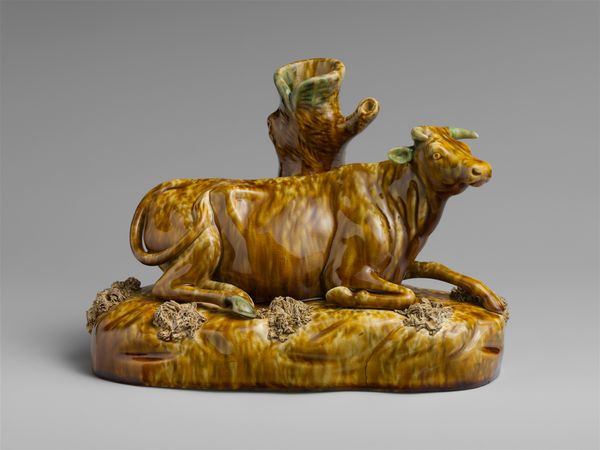
ceramic, sculpture
#
portrait
#
ceramic
#
figuration
#
england
#
sculpture
Dimensions: 5 1/8 x 3 1/8 x 1 7/8 in. (13.02 x 7.94 x 4.76 cm)
Copyright: Public Domain
Editor: Here we have a ceramic sculpture from the 19th century titled "-Seated Spaniel- still bank," authorship unknown, currently housed at the Minneapolis Institute of Art. The piece feels quite humble, almost like a child’s toy, yet it possesses this undeniable charm. What strikes you most about it? Curator: What immediately catches my attention is how this seemingly simple object reflects a much broader socio-economic landscape. The rise of the middle class in 19th-century England created a demand for affordable, decorative objects. Pottery banks like this one were not just for saving money; they were signifiers of domestic respectability and aspiration. Do you see how the dog, a symbol of loyalty and companionship, reinforces that message? Editor: I see what you mean. It’s not just a piggy bank; it’s about wanting to be seen a certain way. But who was the target audience? Wealthier families or more working-class homes? Curator: Primarily, these would have found their way into homes of the burgeoning middle class. Consider how these objects were often marketed—think of trade cards, window displays—they participated in a visual culture that reinforced notions of domesticity and upward mobility. What do you think its presence would signify within a Victorian home? Editor: Perhaps, displaying it showed they were responsible, forward-thinking. A family on the up and up? That is interesting considering we would often attribute this as the opposite nowadays! Curator: Precisely! Its value lies not just in its aesthetic appeal but in what it reveals about the social dynamics of its time. I wonder if its creation as part of the industrial revolution and the social status attributed would make it seem as aesthetically pleasing now if its context was completely unknown. Editor: I’m starting to see these humble decorative pieces in a completely different light. Thinking about the role these pieces played in constructing and communicating social identity is quite fascinating. Thanks for showing that!
Comments
No comments
Be the first to comment and join the conversation on the ultimate creative platform.


